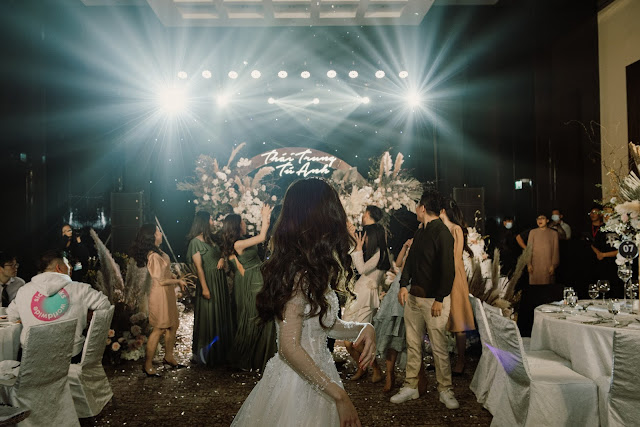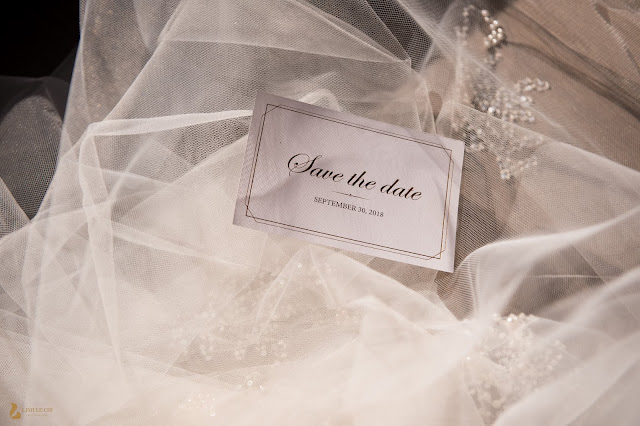Vietnamese wedding traditions
The traditional Vietnamese wedding is one of the most important ceremonies in Vietnamese culture, influenced by Confucianism and Buddhism ideologies. It is a significant day not only to the couple involved but also for both families. Thus, it usually includes quite a few formal ritual observances. Depending on habits of specific ethnic groups, marriage includes various steps and related procedures, but in general, there are two main ceremonies:
Before the engagement day, each family chooses a representative. This person is a member of the family which has a happy life and a high ranking position in the family. Both of representatives do representation, exchange gifts and controlling the flow of the ceremony. Besides choosing the representatives, both families sit together to negotiate the dowry and the good time for the ceremony. The time is chosen very carefully based on the propitious time and day of lunar calendar.
On the fiancée's side, all she and her family have to do is get ready for the ceremony such as making sure the house is clean, decorating the place to make it look pretty (usually the decoration will be all in the color red, which stands for good luck/fortune), and the ancestors' altar all set up with fruits, tea, and incense sticks.
On the fiancé's side, he and his family have to prepare the gifts several days before the engagement ceremony. Traditionally the gifts was placed a number of trays. The number must be an odd number 5, 7 or 9… trays depends on the condition of the fiancé family. The gifts are covered by the red color paper or cloth. In Vietnamese beliefs, the odd number and the red color will bring luck to the young couple. The gifts include betel leaves, areca nut fruits (trầu, cau), wine, tea, husband-wife cake (bánh phu thê) and sticky rice… one of the most important gift is the whole roasted pig which placed in a large tray. carried by unmarried boys and received by unmarried girls. Boys represent for fiancé bearing the gifts and girls represent for fiancée receiving the gifts. It is also expected that some of gifts are returned to the fiancé family for luck before the fiancé's family leaves.
In the past, engagement ceremony was considered very important even more than the wedding ceremony because this goes back more to the old days when marriages were arranged and one side would fear the other would back out. So the ceremony is to make sure no party will cancel the wedding once the couple is engaged. The reason why this can be viewed as an engagement party or a betrothal ceremony, is because they are both a public announcement that the couple is preparing to marry and that the focus is on each other. In some respects, it is the first opportunity to change the couple's focus from 'me' to 'we'. Nowadays, it is less important and varied for each region. While the betrothal and engagement parties can happen months beforehand, it's becoming more common to hold everything together to accommodate people's busy schedules.
 |
On the fiancé's side, he and his family have to prepare the gifts several days before the engagement ceremony. Traditionally the gifts was placed a number of trays. The number must be an odd number 5, 7 or 9… trays depends on the condition of the fiancé family. The gifts are covered by the red color paper or cloth. In Vietnamese beliefs, the odd number and the red color will bring luck to the young couple. The gifts include betel leaves, areca nut fruits (trầu, cau), wine, tea, husband-wife cake (bánh phu thê) and sticky rice… one of the most important gift is the whole roasted pig which placed in a large tray. carried by unmarried boys and received by unmarried girls. Boys represent for fiancé bearing the gifts and girls represent for fiancée receiving the gifts. It is also expected that some of gifts are returned to the fiancé family for luck before the fiancé's family leaves.
 |
In the past, engagement ceremony was considered very important even more than the wedding ceremony because this goes back more to the old days when marriages were arranged and one side would fear the other would back out. So the ceremony is to make sure no party will cancel the wedding once the couple is engaged. The reason why this can be viewed as an engagement party or a betrothal ceremony, is because they are both a public announcement that the couple is preparing to marry and that the focus is on each other. In some respects, it is the first opportunity to change the couple's focus from 'me' to 'we'. Nowadays, it is less important and varied for each region. While the betrothal and engagement parties can happen months beforehand, it's becoming more common to hold everything together to accommodate people's busy schedules.
Le cuoi (wedding ceremony):
On the wedding day, the groom's family and relatives go to the bride's house bringing a lot of gifts wrapped in red papers. These gifts are similar to those of the engagement: betel leaves and areca nuts, wines, fruits, cakes, tea ... The persons hold these trays are also carefully chosen, usually they are happily married couples. Ladies and women are all dressed in Ao Dai. Men prefer to be in their suits but some of them are still fond of men traditional Ao Dai. The troop is usually led by a couple that is most wealthy and successful among the relatives, this means to wish the to-be-wed couples a blessing life together in the future.
The groom's family will wait to be invited inside, introduce themselves and ask permission for their son to marry his bride. The master of the ceremony (usually a respected person among the bride's relatives) instructs the bride's parents to present their daughter. The bride then follows her parents out. The couple should pray before the altar ask their ancestors for permission for their marriage, then express their gratitude to both groom’s and bride’s parents for raising and protecting them.Then, they bow their head to each other to show their gratitude and respect toward their soon-to-be husband or wife. The master of the ceremony would gave the wedding couple advices on starting a new family. Their parents would take turn to share their experience and give blessing. After that, the groom and the bride exchange their wedding rings and receive the gifts from their parents such as golden bracelets, ear rings, necklace... The ceremony is of course ended with tears, laughters,
a round big applause.
As a Vietnamese working in wedding industry oversea, I can see wedding celebration is one of the most important events in a person's life, and it also reflects the character of each country's particular culture. Western and Vietnamese have very different cultures; therefore, their marriage ceremonies have many different elements such as the engagement ceremony, wedding ceremony and receptions, and the wedding gift. One of the main differences between an Western and Vietnamese wedding is the engagement ceremony. It is not necessary to ask permission of couple's parent about their wedding in Western countries. However, a Vietnamese engagement ceremony is an important one before the wedding which involves both families. Before that day, their parents meet to formally discuss the wedding and agree for them to live together as husband and wife. If they agree, the engagement rings are given and they make plans for the Big Day together.
 |
On the wedding day, Western and Vietnamese also have several differences. Western wedding ceremony usually takes place as a civil ceremony in a government building or religious ceremony in a church or other outdoor venues such the beach, park or barn while a Vietnamese wedding ceremony begins in front of the altar. Both Western and Vietnamese also exchange wedding rings during the ceremony; however Vietnamese parents will take turns to sharing their experiences and give blessings and are legally empowered to marry the couple instead of a priest, minister or rabbis. In addition, Vietnamese parents and other their relatives give the newly wedded couple gold bracelets, earrings and other valuable gifts as a blessing and to warmly welcome the new member to the family.
After the wedding ceremony both Western and Vietnamese wedding parties leave to join guests at a wedding reception. Sometimes, guests are invited only to the wedding ceremony or only the reception, and these events can usually be attended only by invitation. However, Vietnamese receptions are usually a large gathering, often in the hundreds and sometimes even more. The groom, bride, and their family are once again introduced to the guests and invite everyone to enjoy the dishes. Dinner or lunch is served at the table, and there are at least five dishes and dessert. In contrast, Western receptions can be a very simple one with only a few family member and close friends present or can be very elaborate with hundreds people in attendance. So, it can be with as simple as cookies and bunch in the church or as a large as a sit down dinner held on at a local hotel with a daises and private orchestra following dinner. Another important factor on the wedding day is the wedding gifts. Both Western and Vietnamese couples expect wedding gift from people who received a wedding invitation. Western couples receive gifts before the wedding, so guests send or deliver wedding gifts to the bride's family home before the wedding day. In contrast, Vietnamese guests give envelopes containing wedding cards, money gifts and a blessing to the newly wedded couple during the reception when the groom, bride, and their parents visit each table to thank their guests.
 |
However, influenced by busy scheduled life, the wedding celebration in Viet Nam has approximately changed. Now, Vietnamese wedding is not as complicated and expensive as before. But no matter whether the wedding is simple or full of twists and turns, budgeted or high-priced, it is always the most important day in a person's life.





Nhận xét
Đăng nhận xét